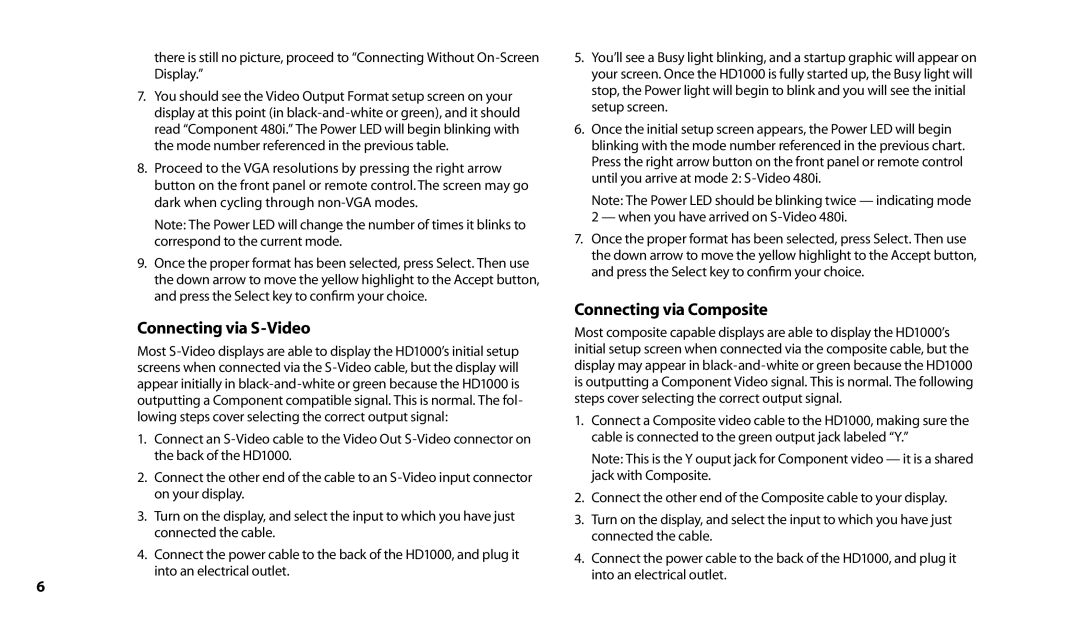there is still no picture, proceed to “Connecting Without
7.You should see the Video Output Format setup screen on your display at this point (in
8.Proceed to the VGA resolutions by pressing the right arrow button on the front panel or remote control.The screen may go dark when cycling through
Note: The Power LED will change the number of times it blinks to correspond to the current mode.
9.Once the proper format has been selected, press Select. Then use the down arrow to move the yellow highlight to the Accept button, and press the Select key to confirm your choice.
Connecting via S-Video
Most
1.Connect an
2.Connect the other end of the cable to an
3.Turn on the display, and select the input to which you have just connected the cable.
4.Connect the power cable to the back of the HD1000, and plug it into an electrical outlet.
6
5.You’ll see a Busy light blinking, and a startup graphic will appear on your screen. Once the HD1000 is fully started up, the Busy light will stop, the Power light will begin to blink and you will see the initial setup screen.
6.Once the initial setup screen appears, the Power LED will begin blinking with the mode number referenced in the previous chart. Press the right arrow button on the front panel or remote control until you arrive at mode 2:
Note: The Power LED should be blinking twice — indicating mode 2 — when you have arrived on
7.Once the proper format has been selected, press Select. Then use the down arrow to move the yellow highlight to the Accept button, and press the Select key to confirm your choice.
Connecting via Composite
Most composite capable displays are able to display the HD1000’s initial setup screen when connected via the composite cable, but the display may appear in
1.Connect a Composite video cable to the HD1000, making sure the cable is connected to the green output jack labeled “Y.”
Note: This is the Y ouput jack for Component video — it is a shared jack with Composite.
2.Connect the other end of the Composite cable to your display.
3.Turn on the display, and select the input to which you have just connected the cable.
4.Connect the power cable to the back of the HD1000, and plug it into an electrical outlet.
